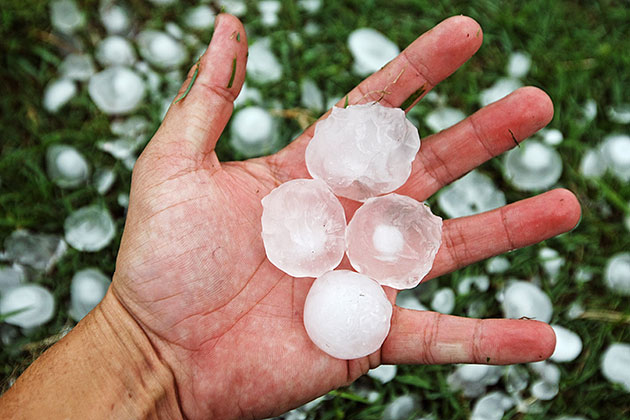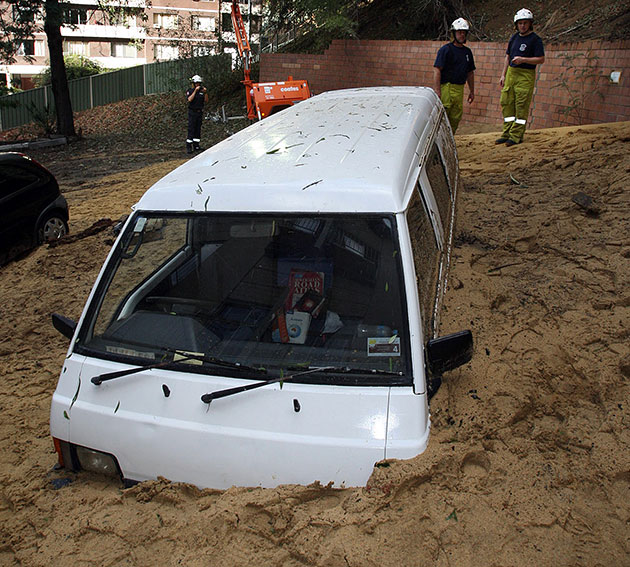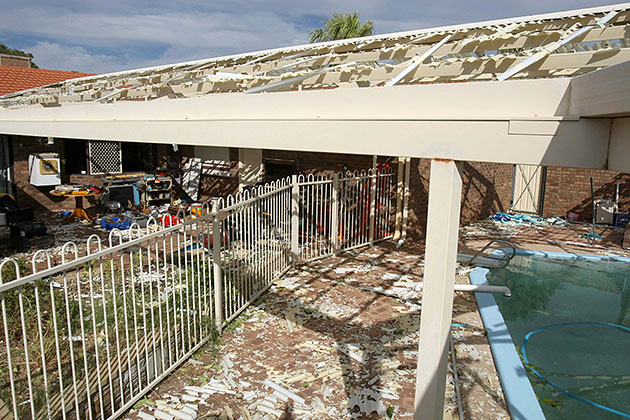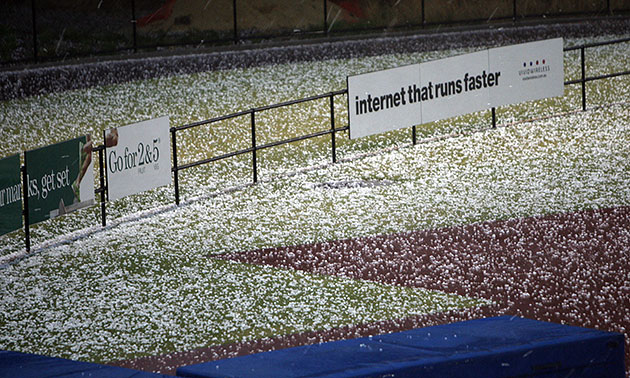22 March, 2020 By: Vanessa Pogorelic
This month marks 10 years since the super-charged hailstorm that created devastation across Perth.
Late one Monday afternoon in March 2010, nature unleashed its fury across Perth with a weather event the likes of which many locals had never experienced.
The storm that tore across the metropolitan area was as fierce as it was unexpected, raining down hailstones up to 6cm wide on commuters heading home from work, smashing roofs and pummelling cars.
The damage it caused was unprecedented in Perth.
In terms of the extent of the disruption and damage from flooding, high winds and hail, it was considered one of the worst storms in Perth's history, according to WA’s Bureau of Meteorology (BOM).
“The intensity of it you don’t get very often in Perth,” says BOM’s Neil Bennett.
“We usually get that kind of severe thunderstorm further to the east in the Wheatbelt. So when you get those really unseasonal days during warm weather, they’re the ones that take people by surprise.”
The storm was declared a natural disaster by the State’s then premier, Colin Barnett and became the costliest natural disaster in WA’s history.

Adding up the damage
Following the storm, total insured losses added up to $1.05 billion with a total economic loss to the State of $1.35 billion.
RAC alone processed more than 40,000 insurance claims totalling more than $200 million.
Although no part of the metropolitan area was spared, some suburbs bore the brunt more than others.
RAC’s largest number of claims came from Nedlands, Crawley, Shenton Park and surrounding areas. The single highest claim, totalling $188,000, was for a home in Nedlands.
While flooding caused significant damage, including a ceiling collapse at Joondalup Hospital and a landslide at an apartment block on Mounts Bay Road, large hail had the most widespread impact. Some hailstones that fell that day measured up to 6cm in diameter.

“Hailstones fall at speeds of up to 100km/h,” says Bennett. “We set a threshold of a 2cm diameter for what we determine to be hail that’s likely to cause damage.
“So when you have a 6cm chunk of ice falling at 100km/h it’s going to create some havoc."
In addition to hail, wind and rain, lightning strikes also wreaked havoc that day. Lightning struck a Western Power sub-station, cutting power to tens of thousands of homes.
In a single day, the storm generated a years’ worth of vehicle write-offs, with more than 9,000 vehicles owned by RAC members declared as written-off.
Dealing with the fallout
In the immediate aftermath of the storm, RAC became an important source of information for the community, providing local media with daily updates on the nature and extent of the damage, and information about how claims and repairs would be dealt with.
“We recruited a whole new team to contact our members and help them through the process,” says RAC claims manager, Glen Walker.
“In those early stages that also included information for those who had extensive damage to their homes and needed temporary repairs.

“We set up a dedicated ‘crisis room’ where key personnel would meet three times a day to develop the tactics to manage the catastrophe. There was a lot of afterhours work. In the early stages, every night a couple of people would do a ‘dinner run’ to feed those working overtime. There were lots of us.
“It was a difficult time, but our staff were amazing. We received support from every corner of the RAC, not just insurance.”
To help manage the extraordinary number of claims, RAC recruited assessors from as far away as New Zealand, along with Australia’s other motoring clubs.
With damaged vehicles making up the largest number of claims, temporary weekend motor assessment centres were set up where assessors could inspect large numbers of cars to deal with the backlog.
“We had long queues of cars waiting each day. Our staff would walk along while people were waiting and provide members with water, newspapers and fresh hot dogs. We had transporter trucks waiting at the facilities to take away the written off vehicles. This was a big and complex operation.”

From chaos to calm
The road to recovery was a long one, requiring a collective and sustained effort across the community, from local emergency services to the large number of organisations and businesses that provided the services needed to repair and rebuild.
“The catastrophe actually brought about changes in our processes that worked really well. We learned a lot from the event and many of the changes implemented then became business as usual after the event.
“And our people really were amazing, even though they were all personally impacted as well.
“Many even chose to stay behind at work on that first night because they knew what was coming. They dug in and worked hard to help us all get through.”
Images courtesy of West Australian Newspapers
Enjoy this story? Get more of the same delivered to your inbox. Sign up to For the Better eNews.
